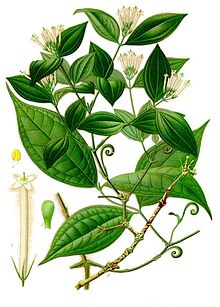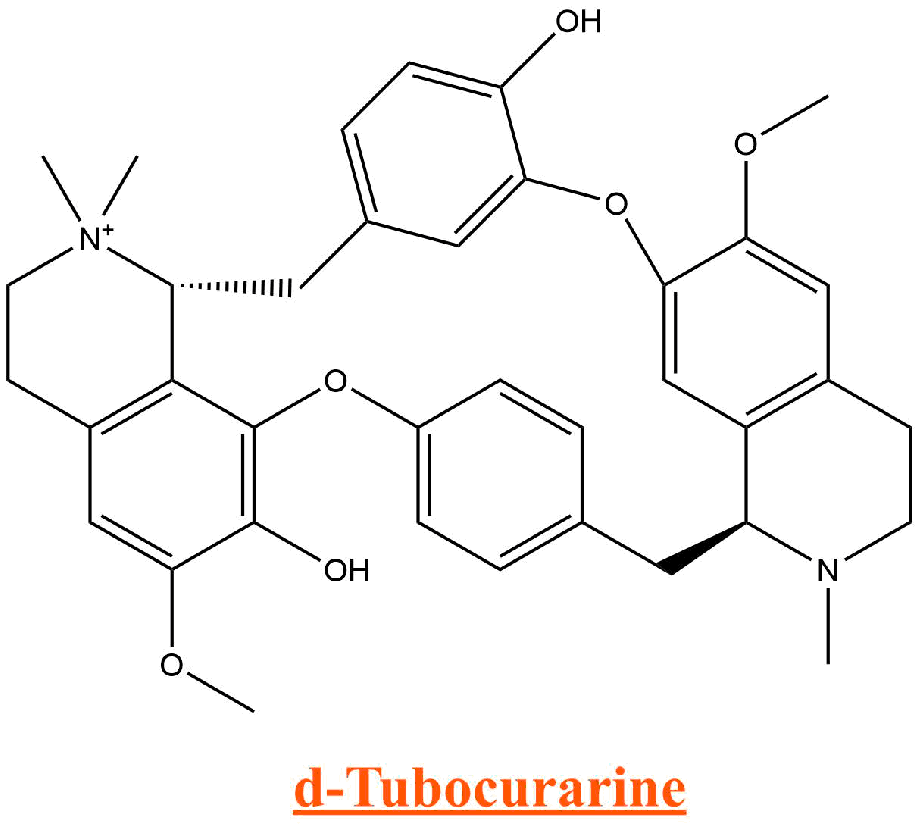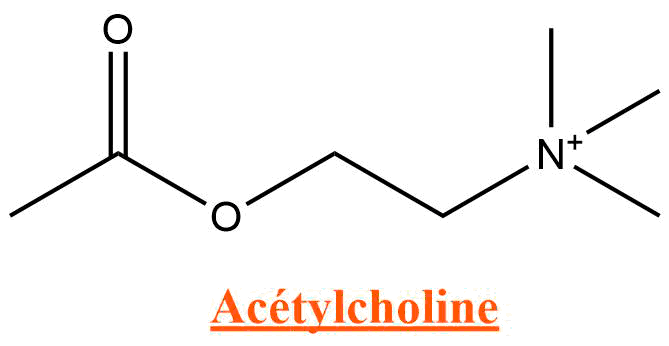Arsenic pudding (1)
Hello everyone :)
The famous song of "arsenic pudding" sung by Amonbofis and Tournevis in the cartoon "Asterix and Cleopatra" delivers us a real fireworks of poisons and toxic products. Let's analyze the products of this musical recipe to support chemistry;)
Interesting ingredients :
- The curare
- arsenic
- Strychnine
- Morphine
- The hemlock
- The death-to-rats
- The green of gray
- The vitriol
The first article will therefore deal with the curare, the other compounds will be evoked in the next articles.
The curare
The curare corresponds to a family of compounds extracted from strychnos-type lianas.Strychnine can also be extracted from some of these plants (another poison that will be studied in the third article related to this songs). However, the presence of strychnine in these species is rather rare compared to the curares.
Strychnos toxifera :
Strychnos Toxifera 1887 , Koehler
Curares were used in particular by the Amerindians as poisons to coat the end of their arrow.This poison causes paralysis and muscle relaxation, and death then results from an inability to contract the muscles of the rib cage, and the victims die by choking.
In medicine, curares are used as anesthetics because they allow a relaxation of the muscles (muscle relaxant effect). The great advantage of this compound in anesthesia is that it affects the skeletal muscles (affected somatic nervous system), but not the more vital muscles such as heart and stomach. Provided that the patient can be connected to the respiratory system, it can be used as an anesthetic without risk to the heart.
The curares extracted from plants are composed of a large number of molecules. It is one of these compounds: curare d-tubocurarine which has been used as anesthetic.
Mode of action of curares in the body
To understand how curare works to cause muscle relaxation, it is important to understand the functioning of the nervous system. For that I found a video YouTube of Neuroscientifically Challenged which explains very well the propagation of the information by the neurons.
In the case of the curares are the motoneurons that intervene, they are responsible for the movements of the skeleton. The neurotransmitter responsible for the transmission of nerve impulses between the presynaptic and post-synaptic neurons is acetylcholine.
Acetylcholine binds to a post-synaptic neuron receptor to induce muscle contraction, and after a few milliseconds it breaks down and is degraded by the cholinesterase enzymes of the synaptic cleft: it is muscle relaxation.
If the structure of the curare is observed, the latter carries an ammonium functional group (a nitrogen forming four bonds). It is also noted that acetylcholine also possesses this functional group. Thus, it is easy for the curare to "mimic" the acetylcholine and to attach itself to the receptors in place of the latter. In addition to the difference of acetylcholine the curare does not cause muscular contraction once it is fixed on the receptor. Acetylcholine can not bind itself and is degraded directly into the synaptic cleft. The muscle can no longer contract.
References
-
Wikipedia on the curare
- http://sofia.medicalistes.org/spip/spip.php?article267
- http://sofia.medicalistes.org/spip/spip.php?article387#lescurares
- http://pourquoilecielestbleu.cafe-sciences.org/articles/les-plantes-et-leurs-poisons-7-le-curare/
The last site mentioned above is a very good chemistry blog, I advise you;)
Inscrivez-vous au blog
Soyez prévenu par email des prochaines mises à jour
Rejoignez les 13 autres membres




